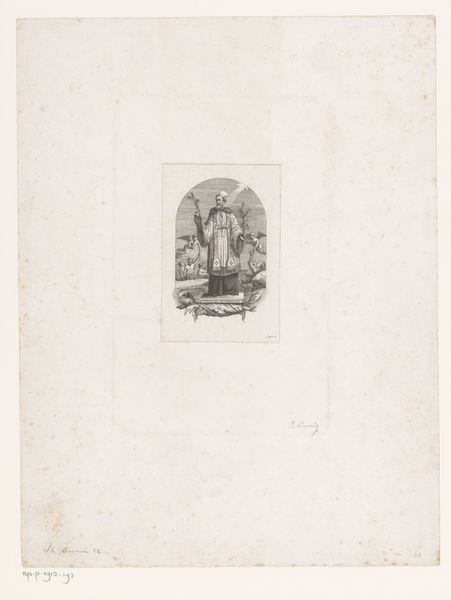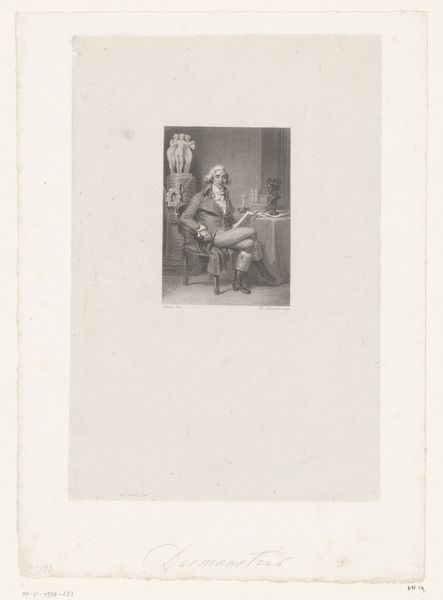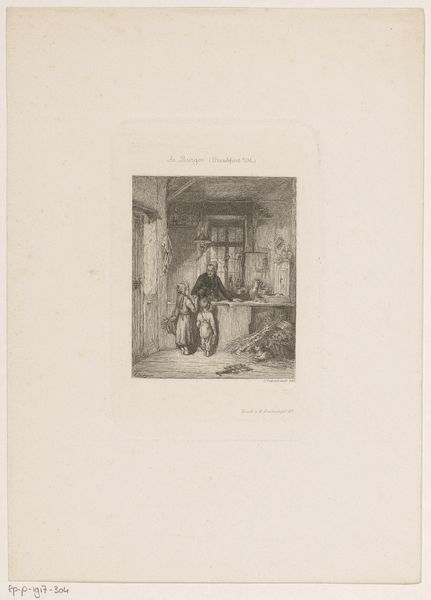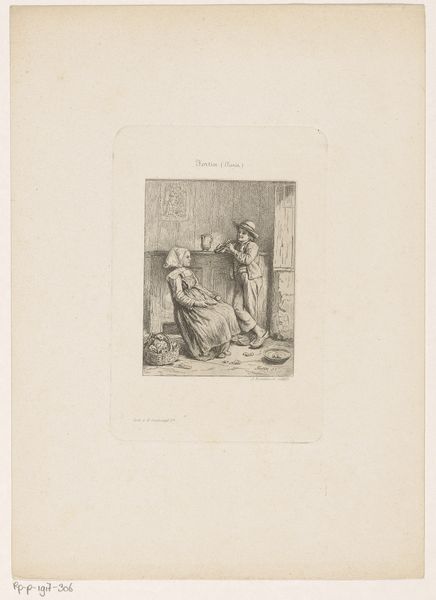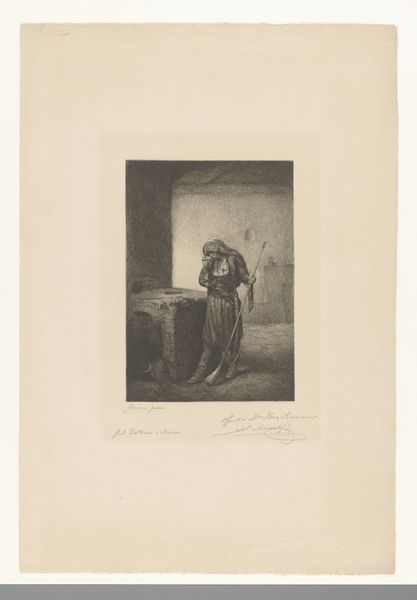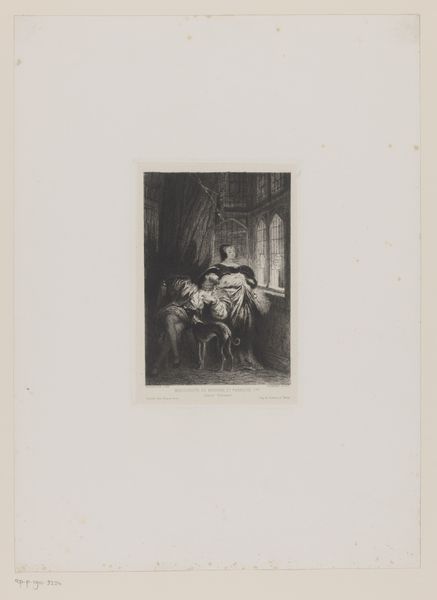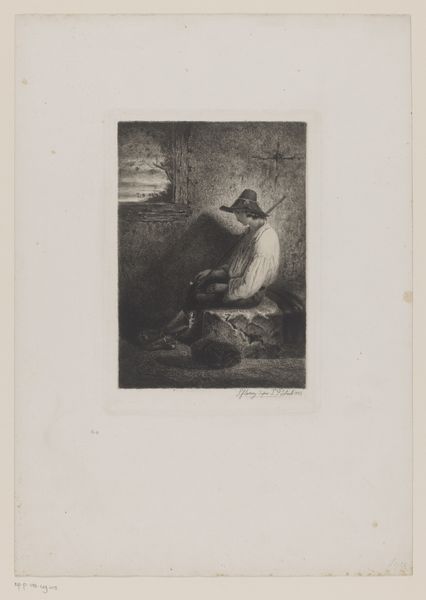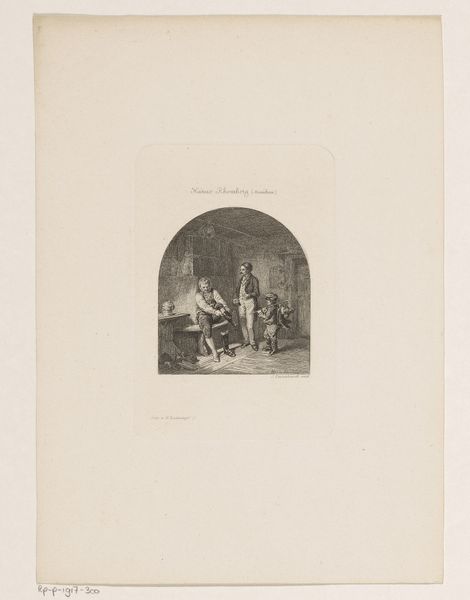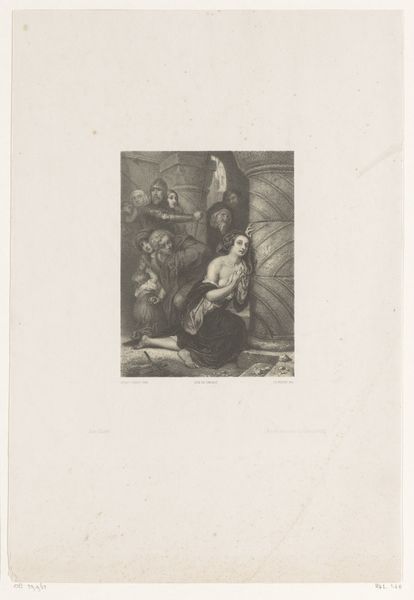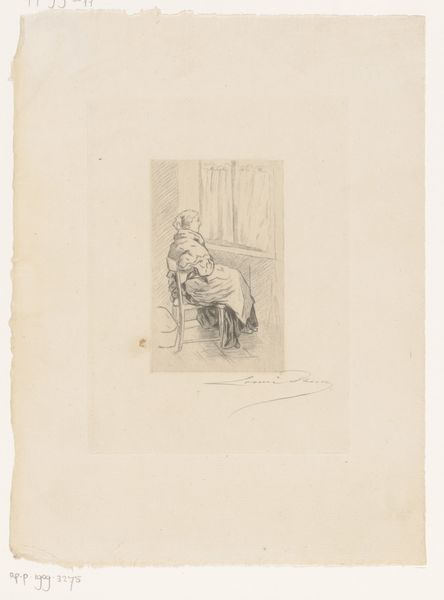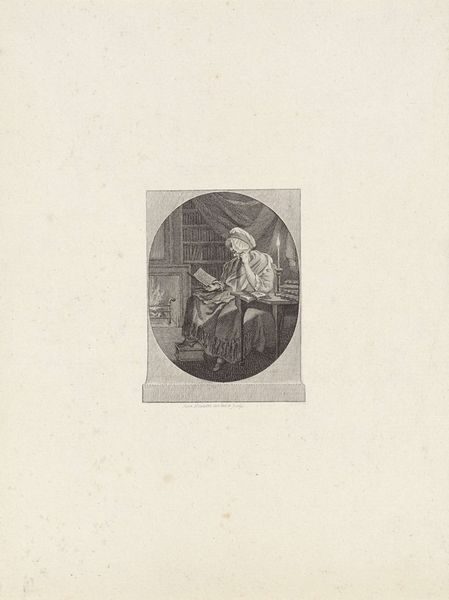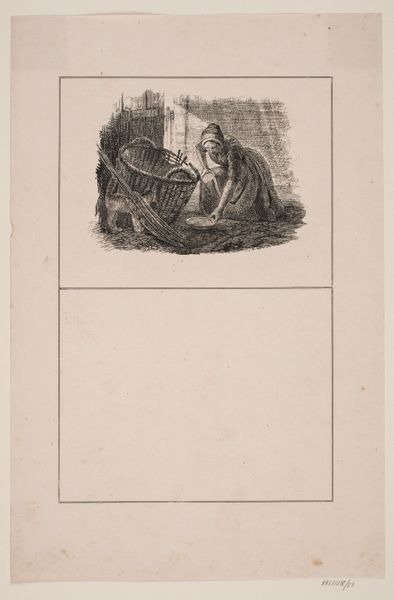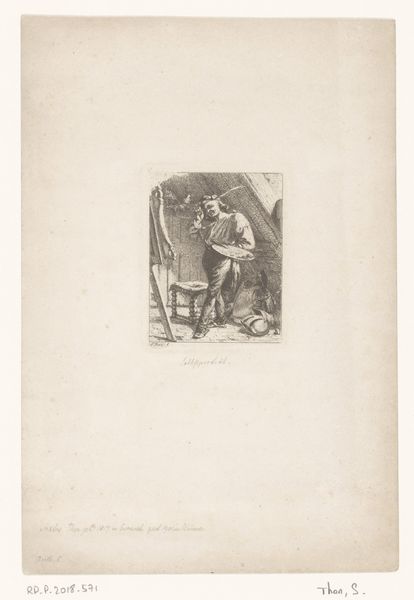
drawing, print, engraving
#
portrait
#
drawing
# print
#
genre-painting
#
engraving
Dimensions: height 137 mm, width 94 mm
Copyright: Rijks Museum: Open Domain
Editor: Here we have "Woman at Her Spinning Wheel" by Johann Kaspar Eissenhardt, a print and drawing made sometime between 1834 and 1896. There's something really intimate about this image; the way she's posed, you almost feel like you're intruding. What strikes you about this piece? Curator: What interests me is the explicit focus on a form of labor, especially given the date range. This wasn't simply domestic craft; it was work, deeply tied to economic conditions and gender roles. Look at the detail in the engraving—it's all about showcasing the process and tools involved in textile production. How do you think the mass production of textiles later in the 19th century may have influenced the depiction of these scenes? Editor: That's a great point; I hadn't considered the context of industrialization. Perhaps images like this one served as a kind of nostalgia for pre-industrial labor? A romanticized view of craft before it became dominated by factories? Curator: Exactly! Think about the materials of the artwork itself. Engraving, a repeatable medium, makes this image widely available, thus commodifying this nostalgia for a slower, arguably simpler way of life dependent on traditional craftsmanship. Who do you think was consuming prints such as this and what relationship would they have to labor, craft, and its production? Editor: Probably members of the rising middle class. People who were consumers of mass-produced goods themselves. This image becomes less about the act of spinning and more about consumption; almost as a badge of honour or distinction. It makes me reconsider how I understood it. Thanks! Curator: It is the relationship between labor and materiality and class that reveals the artwork's complex dialogue about work, culture, and its place within society. A different perspective for sure.
Comments
No comments
Be the first to comment and join the conversation on the ultimate creative platform.
